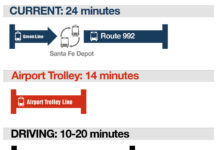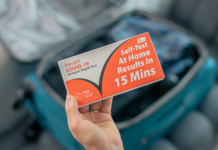In California, state law allows local governments to set up their own not-for-profit electricity providers to give customers choice in who provides their electricity. Legislators called the concept ‘Community Choice Aggregation,’ but it’s popularly known as Community Choice Energy (CCE). The draw is that it enables local control over rates and more clean energy in the mix.
Two key provisions in California’s legislation are that (1) the CCE becomes the default provider of electricity; and (2) customers can opt-out, either before the CCE is launched or after, and continue receiving their power from the local utility. The utility, SDG&E in our case, would continue to operate and maintain the grid and send out monthly electric bills, with the only difference being that there would be a new CCE line item covering the charge for your energy consumption. This, along with having a choice, is what makes CCE different than a municipal utility.
There are five CCEs in California. Cities in Marin, San Mateo, and Sonoma Counties banded to form CCEs, and the Cities of Lancaster and San Francisco run their own.
Each CCE has a basic plan that they offer customers, and all five are procuring more clean energy, anywhere from 5% to 20% more than what the competing investor-owned utility has in the mix. Customers who want to be really green can purchase a 100% clean energy option at $5 to $25 additional per month.
What about rooftop solar? CCEs have set up their own solar programs so that existing and future rooftop solar customers get higher credit for the excess energy they put into the grid.
A CCE can use electricity customer dollars to invest in local clean energy projects that create jobs and save money for residents and businesses. You can find examples at mcecleanenergy.org/local-projects/.
CCE rates are set in local public meetings with public input. They have consistently averaged 1-3% less than those of the investor-owned utilities while providing more clean energy.
The City of San Diego is conducting a CCE technical study. It is scheduled to be completed by next summer. Then Mayor Faulconer will make a recommendation to the City Council on whether or not the city should launch a CCE provider. The cities of Del Mar, Solana Beach, Encinitas, Carlsbad, and Oceanside are also exploring CCE for North County
The Sierra Club is a leading proponent of CCE in the San Diego region and invites people to go to sc.org/sdenergychoice if they would like to express support for it. If the City of San Diego forms a CCE, residents, businesses, and schools will have more clean energy and a choice rather than a monopoly.
Quick Facts on Community Choice Energy (CCE)
- Locally controlled not-for-profit electricity provider
- Buys and generates power for its customers and sets the rates
- SDG&E continues to operate the grid and do monthly billing
- Default provider of electricity
- Opt-out feature for customers that prefer to stay with SDG&E
- Higher clean energy content
- Opportunity to create better rooftop solar program
- Rate competition for SDG&E
Carol Warschauer, is a Sierra Club volunteer and Bay Park resident.




